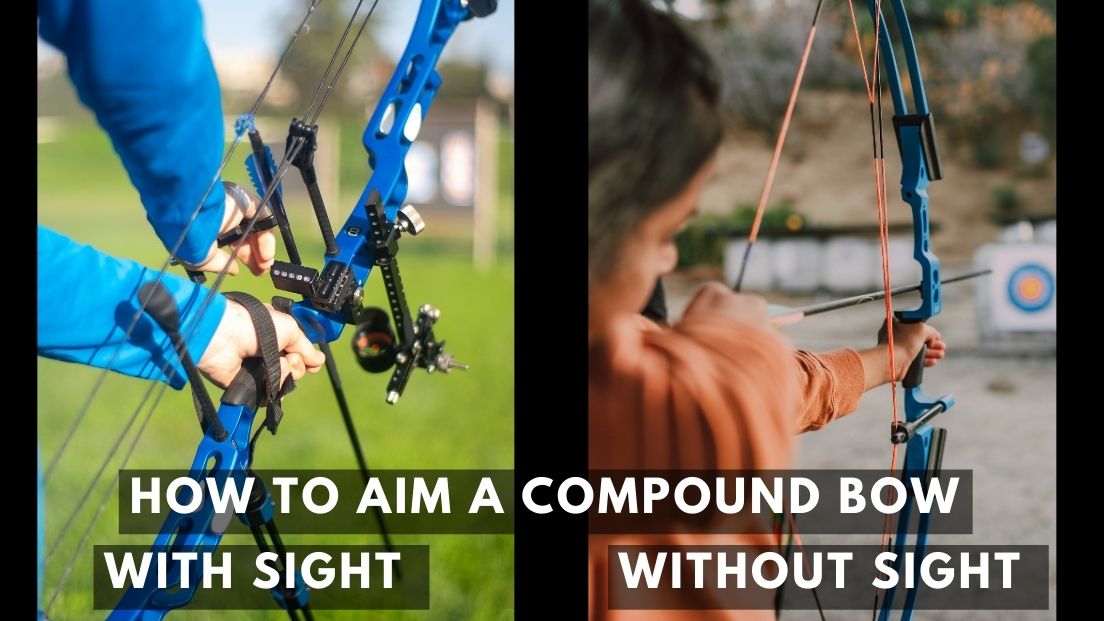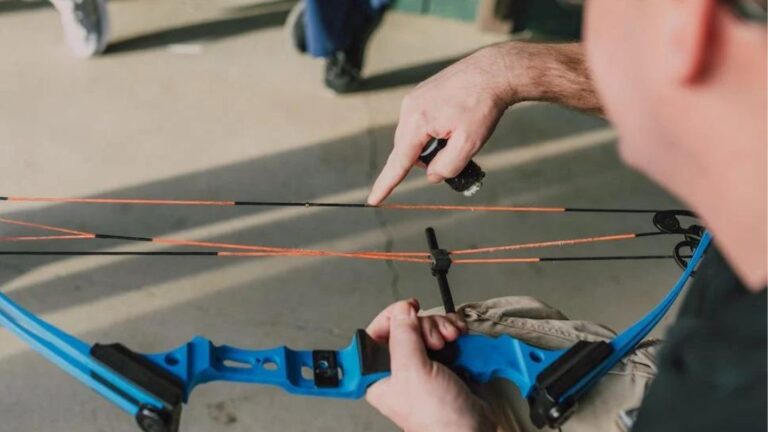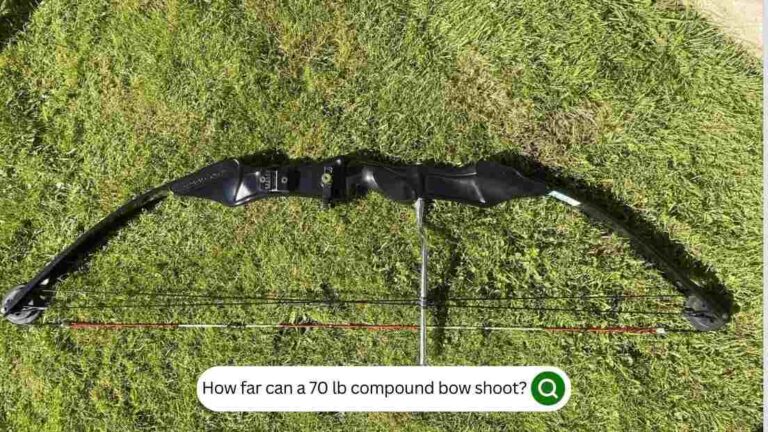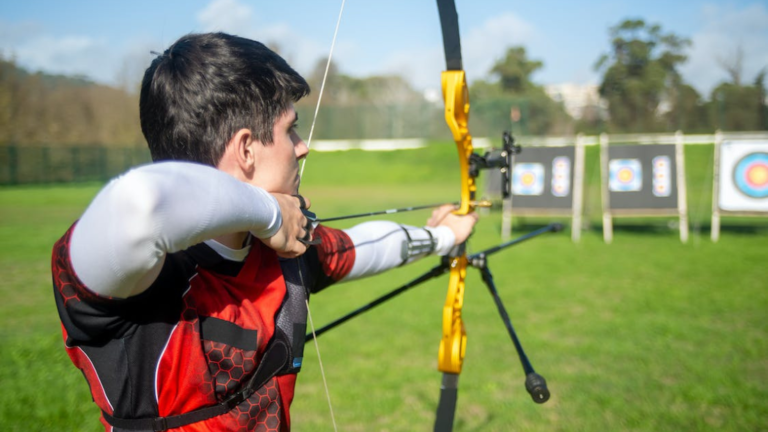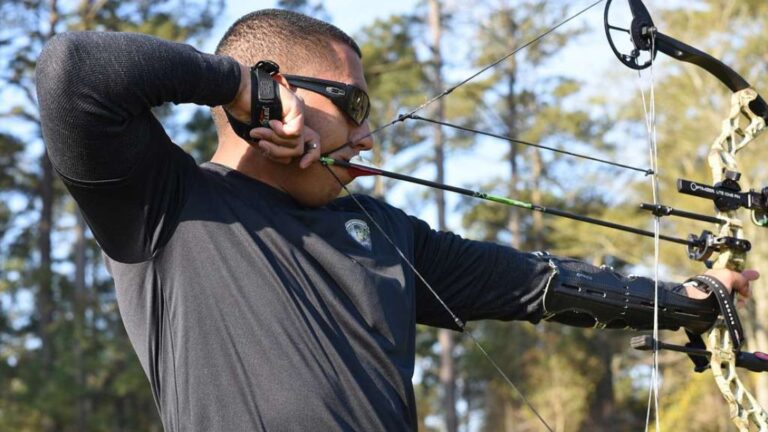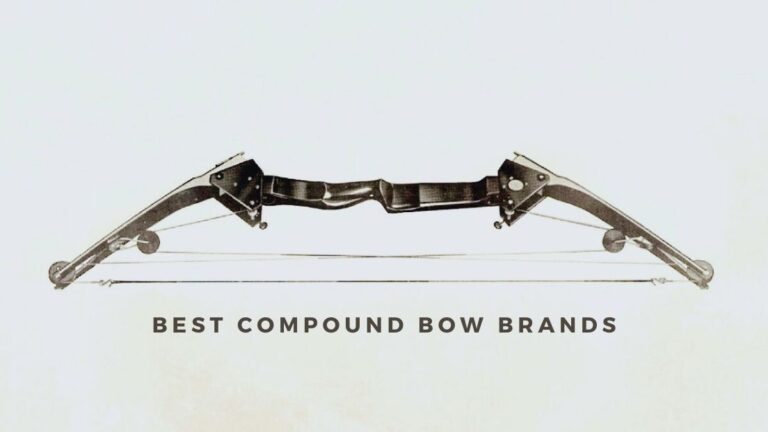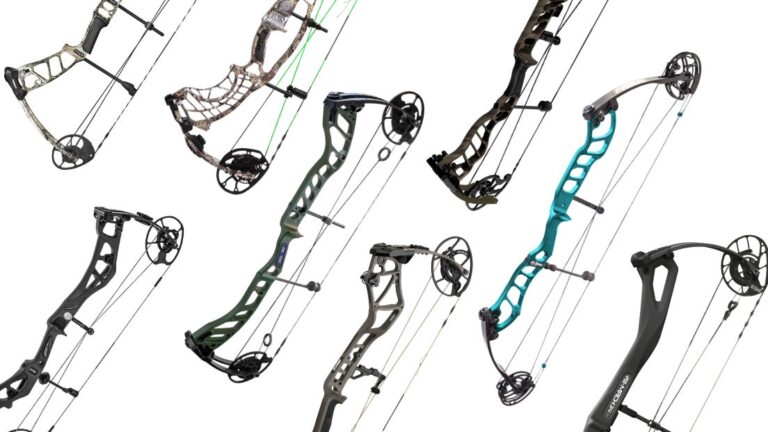About the Author: Austin Murphy is a skilled hunter with a passion for archery. With 17+ years of experience, he possesses extensive knowledge of various archery equipment, including compound bow, recurve bow, and crossbow. His expertise in these accessories allows him to pursue his love for archery while honing his hunting skills with precision and finesse. As participant in NFAA and ASA competitions, Austin own around 8 Recurve Bows, 6 Compound Bows, and 2 Crossbows.
Aiming with a compound or any other bow is not easy, especially for new archers. It is a skill that needs practice, patience, and experience to learn how to aim and when to shoot. We know that most of the modern archers use sight to aim and compound bows are equipped with sights to facilitate them.
However, along with using sights, there are a number of tools and techniques that you will require to master aiming with your compound bow. All the same, some archers and bowhunters also prefer “instinctive aiming”, which means that they do not use any special tool to aim.
Though instinctive aiming is a useful skill, not everyone can master it, and that’s why compound bows are designed to make aiming easier for archers whether they are beginners or experienced.
And here I’m with all those tips and tricks to make you know and learn the best ways of aiming with your compound bows.
How To Aim A Compound Bow
How better you aim not only depends on sights and stabilizers but also on how capable your body is. Yeah, that’s right. From standing stance to the way you grip your bow and set up your level to shoot, everything plays its role in perfect timing. So, let’s dig out deeper into how this thing will work for you.

Proper Stance And Grip
I suggest you stretch up, do a light warm-up, release all your stress, and be comfortable. Now stand upright with your feet apart. Open your feet as wide as your shoulders are, and lean one foot forward by standing at 90° to your target.
Do not lean your body in any direction. Now this is your proper stance to aim. To ensure a great grip, grab the handle with relaxed fingers and pressure should be on your thumb. Rotate your hand and avoid pushing it against the bow. Also, know your eye dominance because it will help you to focus on your target!
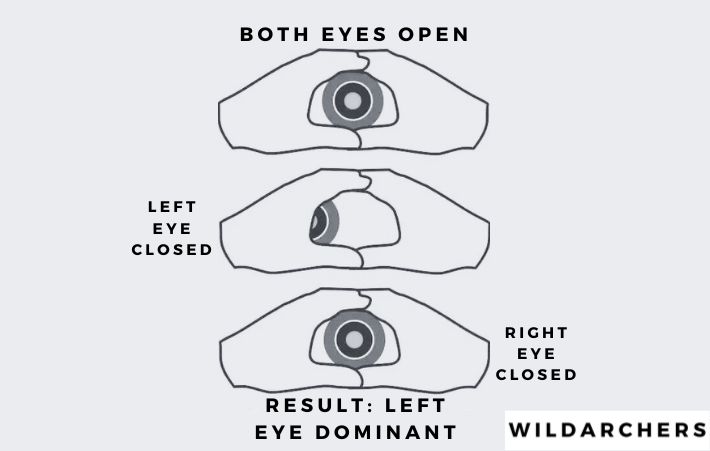
You might be interested in: Understand how temperature can impact the performance of compound bows in our article on Temperature Effects on Compound Bows.
Actually, when aiming with a compound bow, some archers or hunters find that it improves their accuracy if they close their non-dominant eye when shooting. So yeah, it’s really important to know in the beginning, or at least worth the try! I’m sure you have seen in movies that most bullseye happens when the shooter closes their eye so case here is the same.
Aligning The Bow
Sight alignment is necessary. To align your compound bow, line up your bow’s sight pins straight with the target by moving the entire sight back and forth until it is aligned properly.
Anchor Point
Getting ahead is to ensure that your bow is next to the anchor point. To do this, put the arrow into your bowstring, then pull it back with your wrist straight and relaxed. While pulling the string look at the anchor points.
At this point make sure that your bow is next to these points. I will tell you three anchor points to practice for better aiming
- When you pull the string, the point where the string touches your nose is your first anchor point.
- The next is when string touches your face
- And the third one is where the string’s kisser button touches your mouth.
The jawbone and earlobe can also be used as anchor points. But if you are a beginner you might find it difficult to pull string to that much distance. By consistently practicing on these points, you will find out the viable anchor point for your bow to aim.
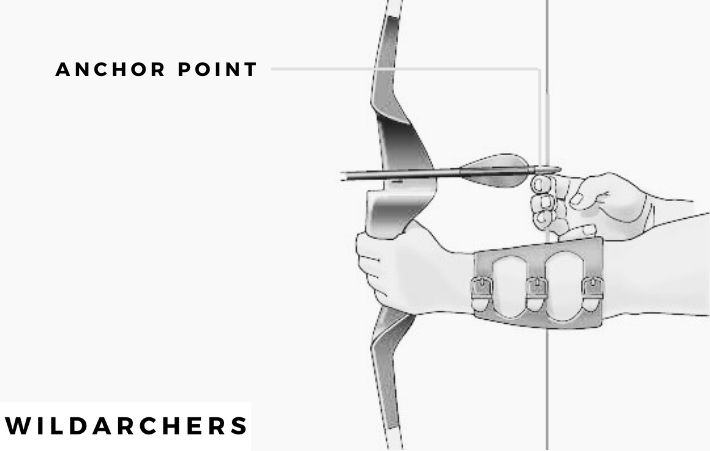
Stay Balanced
Once your anchor point is set, check your bubble level. It is important to check and adjust the bubble level and after doing that, shift your focus to target pins.
Focus on the Process not Target in the Beginning
Instead of anticipating your shot first, focus on the above-mentioned steps and try to master them. Shooting an arrow is not just about pulling a string back and then throwing the arrow at the target. Instead, it is a whole process that follows a strong stance, a well-built grip, and a perfect aiming form.
Without focusing on these steps I highly doubt that you can be a better archer or a bow hunter.
Aim Through The Shot
Once you have everything aligned and ready to shoot, take a deep breath and relax your muscles. Ensure that your bow arm is solid and you are in a consistent anchoring position. Use the peep sight or kisser button once more to ensure that your arrow will hit the target.

Release And Follow-Through
Once you know that everything is settled and ready to throw, push the bow arm toward the target and pull the string back. Now release the arrow to execute your shot. Don’t drop your bow right after you shoot. Keep it in the same position for a few seconds to know if this is the right position to follow on your next shoot.
This tip is known as follow-through and is used by experienced archers to know if the position and the form they used to throw the arrow are right or not.
Practice And Adjustment
Use different adjustment techniques and go through practice sessions to master both aiming and shooting with your compound bow.
How To Be Accurate With A Compound Bow
We all know how crucial it is to be accurate with your compound bow. Even the slightest inaccuracy will ruin your shot. Therefore, I will share with you the tips that do wonders to attain a perfect shot and here they are
- Check your bow’s timing and center shot alignment. The timing marks will show you if your bow is timed properly or not. To check if your bow is properly aligned, take a shot and see if the impact hole is framed perfectly by the arrow’s fletching.
- Test your shooting limits in different situations and different ranges. What happens if you aim small or large, will you hit or miss?
- Adjust your bow grip and expand your shooting target.
- Readjust your bow’s draw weight and draw length according to your requirements.
When Should You Use Compound Bow With Sight
Using a compound bow with sights allows you to be more accurate by placing faster and better shots. Skilled and experienced hunters only take around 30 minutes to adjust their bow to a new sight.
However, it does require time and practice to use a compound bow with sights. If you want to use sight then all of the above methods would make you a novice compound bow shooter.
When Should You Use Compound Bow Without Sight?
For archers who believe in learning and mastering to aim to its fullest, they should practice without sight. The main purpose of using a compound bow without sights is to improve aim by using visualization techniques. But in the start, newcomers should use compound bows with sight because there are other things too that need to be learned too, and removing sight too would make things go out of hands
Using a Compound bow with sights involves technics using mental imagery to visualize shots and help to improve our aim by providing a mental reference point. Mastering this technique boosts the archer’s trust in his instinct and makes him more confident.
Ensure Proper Setup
It is a key part to ensure a proper practicing setup. This will not only help you to improve your skills but you will also analyze the type of situations that are ideal for you.
Take Your Stance
Your stance should be upright and comfortable. Follow the above-mentioned guidelines to make a perfect aiming stance with your compound bow.
Arrow Rest And Nock Point
The nock point is the area marked on the bowstring. Hold your arrow at this point while keeping your bow in a safe direction to shoot toward your target.
Raise The Bow
Draw the bow handle or riser without squeezing it. Keep your arm straight and raise the bow keeping it parallel to the ground. Simultaneously draw the string back to your anchor point while ensuring accuracy.
Draw Down
Use bow sights to align and then release the string to shoot the arrow in the direction of your target.
How To Aim A Compound Bow Without Sights
Traditional archers prefer shooting without sights making it more complex yet exceptional, as not everyone can do that. If you want to aim your compound bow without sight then you can use or try below methods:
Gap Shooting Method Of Aiming Without Sight:
To practice the GAP method, aim your arrow at an imaginary vertical line that runs right through your target. At 10 yards distance from your target, aim the arrow above the bullseye and at 50 yards distance aim it below the bullseye.
You might be interested in: Get guidance on selecting the right compound bow based on your needs and preferences in our article on Choosing a Compound Bow.
String Walking Method To Aim Without Sight:
You can anchor the string to the side of your nose or to the tip of your nose. Once you have chosen your sight be consistent with it. It would be better to just lightly touch the tip of the nose to control the pressure applied on the nose and reduce error which as a result improves your shots.
Tips For Improving Aim When Shooting With A Compound Bow
If you are looking to improve your hunting skills while shooting with or without using sights, then here are few tips that will help you a lot.
Develop a Consistent Anchor Point
You can anchor the string to the side of your nose or to the tip of your nose, once you have chosen your sight to be consistent with it.
It would be better to just lightly touch the tip of the nose to control the pressure applied on the nose and reduce error which as a result improves your shots.
Practice Proper Stance and Grip
The grip is in the center of the bow, it is a part of the riser an archer holds with his hand while shooting and aiming.
The point from where you hold or contact the bow is the “grip”. Improper grip affects your shooting, aiming, and consistency to hit the Target whereas maintaining a proper grip improves the stability and accuracy of your bow. The way you hold the bow, the way you breathe and stand directly affect your shooting.
Pull the bowstring with the dominant hand and with the non-dominant hand hold the grip, make sure you use the same position every time. Holding a grip too tightly can cause a ” death grip” which results in trembling, accuracy and loss of control over the bow.
Your proper posture is also very important. Stand straight with an open stance as it is easy to learn and practice. In an open stance, your hips and shoulder align with the direction of shooting.
Your feet should be shoulders apart, and the side of your foot that is holding the bow aligned to the shooting line will be your front foot. Move your front foot backward and turn it at 45 degrees towards your target.
To engage your core push your chest, ribs, and shoulder slightly down towards your stomach and then forward keep your back straight, practicing your stance and stability will improve.
Focus on Sight Alignment
Focusing on sight alignment means adjusting sight to hit on the bullseye in target with consistency.
Start shooting with at least 10 yards distance (you can increase it gradually). Aim for the bull’s-eye or you can even hit arrows in a grouping or in a circle at any place on the target that is in sight.
It will improve your aim, sight, stance, anchor point, consistency, and release, the closer the arrows are more consistent and accurate you will become.
The more you focus and practice on sight in targets the more your arrow aligns with your target.
Develop a Smooth Release
Release the arrow by releasing tension in your bowstring, now relax your fingers. Keep your stance as still as possible because the bow moves forward a little bit when the arrow is released.
When you release the arrow your hand slightly falls back, and your chest expands and opens while your back muscles contract to make your shoulders closer. This whole process is “dynamic release” and is a little bit difficult for beginners but will improve over time with practice.
Compound bow users can use a releasing aid with wrist straps for a smooth release but make sure to keep your fingers right behind the trigger so you won’t release it accidentally. After releasing the arrow you perform the follow-through technique and then come back into a relaxed position.
Use a Follow-Through Technique
Follow-through is performed by professional and world-class archers which shows its importance. It is the final process, after releasing the arrow you stand there and make sure your arrow has reached the target.
When you pull the arrow your chest expands while the back muscle contracts and shoulders get closer to hold the draw weight. Once you release the arrows energy is transferred to the arrows and the poundage is gone.
However, you still have to keep your arm up in the air in the same position until your arrow achieves its target and count to 3, then finally you can put your bow down and review your shot.
Experiment with Different Aiming Techniques
It’s important to learn proper posture and stance, nocking the arrow, string grasp, drawing the bow, and adjusting the weight and length before experimenting with different aiming.
Once you have learned these skills then you can learn aiming techniques from below to improve your shooting and aiming.
- Holding Aim:
It improves your aiming accuracy and precision without an arrow.
- Mirror Drawing:
It is a great drill to practice posture without using an arrow. You can practice it anywhere time as the only thing you need is a full-length mirror and your compound bow.
- Changing Shooting Distance:
A great drill to practice for professional archers who are also beginners, changing shooting distance will not only make their shot consistent but will also improve their long-distance aiming skill.
Fine-Tune Your Equipment
First, match your arrows with the bow and poundage you are using, then check both cams ( top and bottom). Fix them if they are not balanced or rolling over as in consistent arrow flights are mostly related cams that are rolling over each other.
Thoroughly inspect the D-loop and center shot. A center shot refers to the alignment of the bowstring on rest. Check bow string and apply bowstring wax in case the string is dry, inspect and replace cables if they are worn out or damaged.
Tighten the screw that holds the compound bow and additional accessories for example stabilizer and sights or rests. Give your bow to a competent and highly skilled technician for further inspection, tuning, and maintenance.
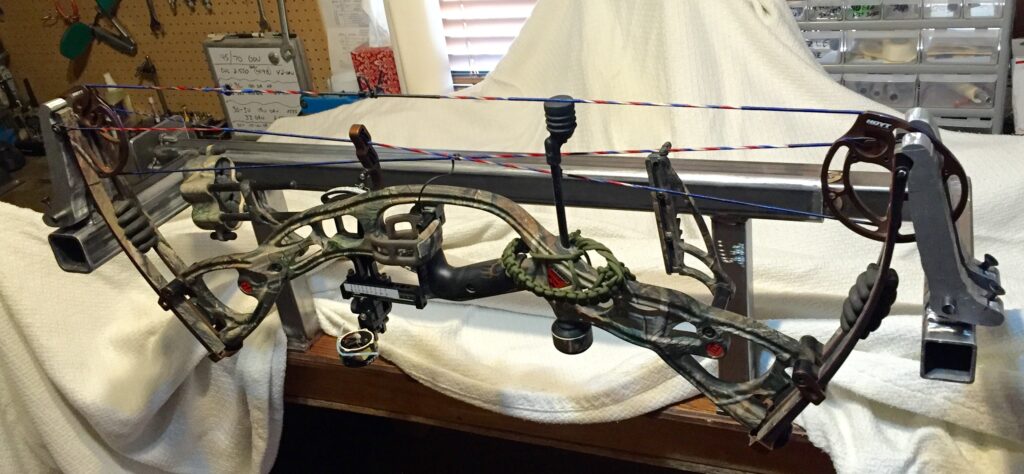
Stay Mentally Focused
Every archer, whether professional or beginner, wants to achieve that perfect shot. That’s when mental focus and calmness become the hardest for both.
Practice focusing on the target in your mind before you focus on it with your bow and arrow. It’s because when we focus on something we become tense which makes it difficult because when we are under pressure our body and mind become weaker.
To keep your mind from wandering away, focus on your stance instead of your target. Focus on form, or focus on aiming, focus more on aiming at each shot, and try to improve it instead of achieving the ideal perfect in just one attempt.
Practice your stance, aiming, and shooting in your mind before you do it in real life, it will take you to a point where your mind will automatically start doing it as soon as you hold the bow in your hand.
Practice, practice, and practice the more you practice the more focused, accurate, stable, and consistent you become.
SOME RELATED QUESTIONS
Is it better to use a compound bow with or without sight?
Sight gives you alignment references, they help in precise aiming. The bow sight is necessary for compound bows that are bare whereas the string walking technique can be used to aim without sight.
Do you aim with the arrow?
Use your both eyes while aiming with an arrow so you can clearly see the target.
How do you know where your arrow hit?
Bright-colored blood on your shaft indicates a lung hit while dark-colored blood and any stomach substance indicate an abdominal hit. If your arrow doesn’t have even a hair on it and is very clear it is a sign that you have missed the shot.
Do archers aim with one eye?
Yes, most bow hunters shoot with one eye, they close their non-dominant eye and use the dominant eye to aim and shoot.
How far should I sight my bow?
Pining at 20 yards is mostly recommended; you can even set higher if you want to, closer The pins are farther you can aim and shoot.
Is it bad to shoot a compound bow without an arrow?
Shooting without an arrow is known as ” dry shooting”, Constant dry shooting damages the compound bow badly as lots of parts and transfer of K.E are involved.
What is a common bow shooting error?
Tightening over gripping and inconsistent hand placement are common bow shooting errors, tight gripping can cause trembling while inconsistent hand placement causes fatigue and inaccurate shot on each release.
Ending Note
With regular practice and proper posture, you will learn the art of archery, remember that compound bows are a dangerous weapon, especially with high poundage so use them wisely.
References:
https://pursuingoutdoors.com/how-to-aim-a-compound-bow-without-a-sight/
https://www.instructables.com/How-to-sight-in-a-Compound-Bow/
https://www.bowhunter-ed.com/pennsylvania/studyGuide/Six-Basic-Steps-for-Shooting/30103902_10136/

